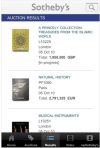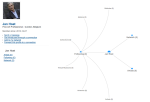Yesterday, we opened these couple of posts about Art Amsterdam Online and the digitalization of the art business with some general ideas. Today we want to dig deeper into the whole debate with focusing first of all on the plethora of digital initiatives we have seen in the art world over the last quarters. Why do they appear all of the sudden? What is driving these initiatives? Are they going to change the art world?
Let’s take a step back and try to put this in perspective. What is happening in the art business is not unique. In fact, the art industry is very late in reacting on the new digital reality. Since the first internet bubble in the late nineties, a lot of industries have experimented with the possibilities the growth of internet has created: from online book stores and travel agencies to online grocery stores, etc… as obvious examples. Not all of them were successful – especially not during the first years – and hardly one of them has pushed an old industry players completely out of the market. However, the ones that managed to make money have grown into strong modern brands, influencing the standard practices of their respective industries and often influencing the relationship between the company offering products or services and the consumer buying them.
 Apart from gallery or museum website and art blogs, there have been a couple of initiatives in the art world that took specifically advantage of the possibilities of the internet. Some of them have been quite successful in terms of reach and turnover. However, most initiatives are dealing with one isolated part of the art market: increasing transparency by providing information about the prices of the work (eg. artnet or artprice) or the cultural scene (Rhizome); making artworks easier accessible to a worldwide market (eg. 20×200); giving global collectors a chance to attend an art fair (eg. VIP Art Fair or Art Amsterdam Online); creating tools to follow auctions (eg. the Sotheby’s tool pictured in this post)…
Apart from gallery or museum website and art blogs, there have been a couple of initiatives in the art world that took specifically advantage of the possibilities of the internet. Some of them have been quite successful in terms of reach and turnover. However, most initiatives are dealing with one isolated part of the art market: increasing transparency by providing information about the prices of the work (eg. artnet or artprice) or the cultural scene (Rhizome); making artworks easier accessible to a worldwide market (eg. 20×200); giving global collectors a chance to attend an art fair (eg. VIP Art Fair or Art Amsterdam Online); creating tools to follow auctions (eg. the Sotheby’s tool pictured in this post)…
Although we love most of these initiatives, none of them can – in our opinion – come up with a good formula to capture the complete world of the collector: his enthusiasm for art & culture in general, his passion for collecting, his interest in visual and formal language, the need for trustful information about a work and its artist, the value of his network of gallery owners, befriended collectors and artists, the pride and joy of showing his collection, the pleasure he takes in traveling to cities and visiting galleries, exhibitions and private collections, …
When the art business really want to move into the digital sphere, it will not be by replacing the existing art market, it will be by building upon its existing structure, players and mechanics. Digital initiatives should try to offer something extra, something valuable for all the parties involved and preferably creating value on economical, cultural and personal/social level.
In our next post we will show how Art Amsterdam Online tried to do this, but unfortunately for us, failed. As proof these two screenshots: 1) the profile of Jan Hoet on Open Art Collection & 2) a tweet by @ArtAmsterdam about the online fair


